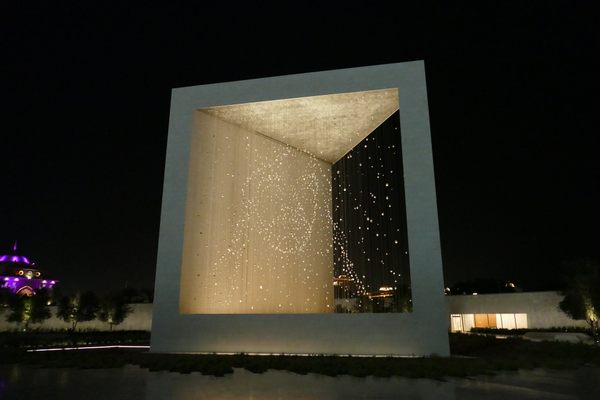AO Edited
'Caracol de Vida' ('Snail of Life')
A monument in the shape of the mighty conch honors the history and symbolism behind this shell.
In Xpujil, the modern town closest to the notable ancient city of Calakmul, a monument called Caracol de Vida (Snail of Life) by sculptor Reynaldo Bolio Suárez (also known as Paccelli) stands as a tribute to the mighty conch.
Conch shells are probably the most important and symbolic of all gastropod shells. Due to their impressive shape and size, the shell of the queen conch has often been represented by the Indigenous peoples of the Americas, since it is native to the Caribbean and Atlantic coasts. The meat of the animal was (and continues to be) extremely valued, but the shell’s many uses for decoration, tools, and even as musical instruments ensured its cultural standing.
A transversal cut of the shell represented Venus and the god Quetzalcóatl for the Aztec/Mexicas; while for the Zapotec, shells were often used as “gloves” for ritual combat similar to boxing. It is believed that the Maya used the conch similarly, and such widespread symbolism lead to the creation of this monument in the Maya heartland.
The sculpture was inaugurated in September 2014 by Campeche’s then-governor, Fernando Ortega Bernes, and municipal president Baltazar González Zapata. The politically-tinged event showcased the importance of the snail, located in the median strip of the major highway that crosses Xpujil.
This political bend negatively affected Paccelli, however, as he was actually not paid the agreed amount for his work. By September 2015, it appears that his case was settled in the state capital of Campeche. The monument itself has symbolism extending beyond the conch shell, engraved with Mayan glyphs.
Sticking out of one end, a snake-like head seems to take shape, and this is likely Kukulcán, the Maya avatar of the Feathered Serpent deity that was common to several Mesoamerican cultures. On the plinth that supports the shell, another engraving can be found, depicting a stylized tree. This is the yaxché, known in Spanish as ceiba, the tree that was crucial to the Maya creation myth of the Popol Vuh.


















Follow us on Twitter to get the latest on the world's hidden wonders.
Like us on Facebook to get the latest on the world's hidden wonders.
Follow us on Twitter Like us on Facebook